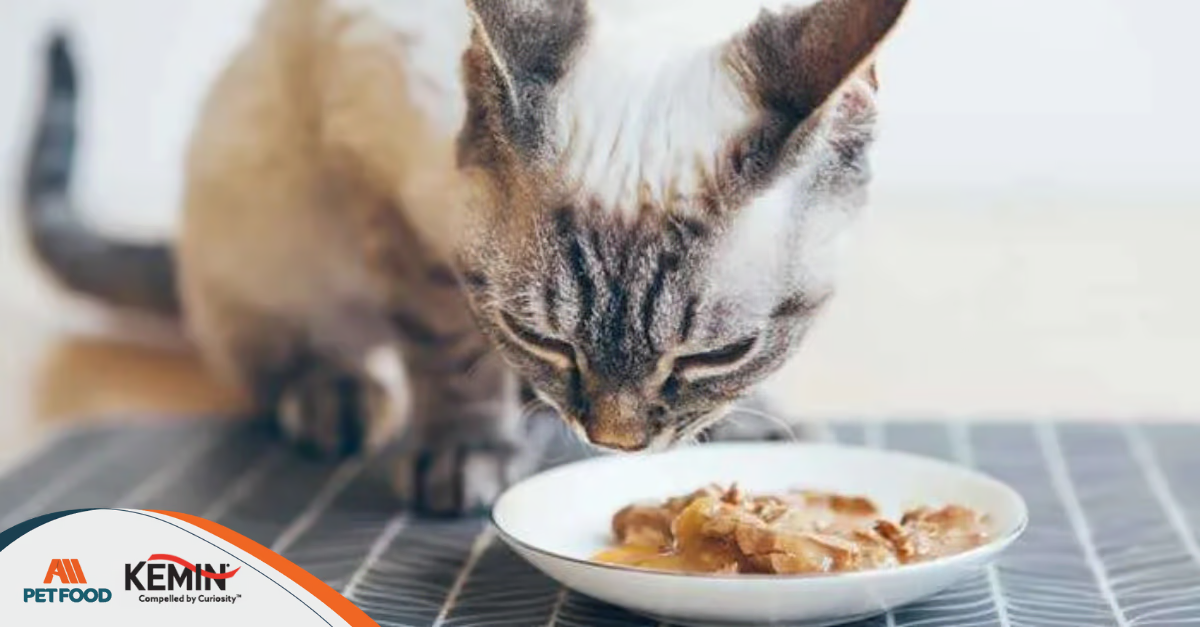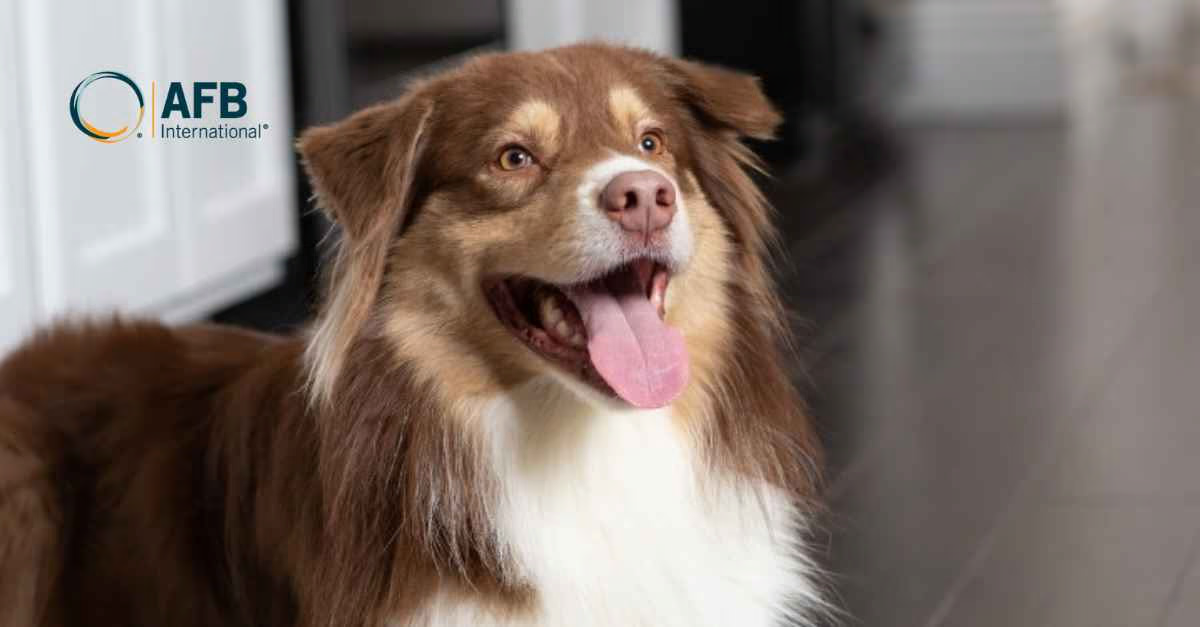The food taste is one of the main characteristics that determine our choice of purchase. Often, we stop consuming extremely nutritious products because they do not have pleasant sensory characteristics. Just like us, animals also take into account characteristics such as flavor and aroma at the time of feeding. This is known as palatability.
There are several ways to study this aspect during the development of a pet formulation. This type of analysis is a powerful tool that has the ability to help us reach the type of formula that most pleases our target audience. Like palatability, digestibility is also something the R&D formulator must be aware of when developing pet foods. In addition to being tasty, they must have bioavailable nutrients for a healthy development.
Formulations that combine palatability and digestibility meet the current demand of the pet market, which in 2017 was responsible for an amount of 25 billion reals in Brazil, 7% more than in the previous year, showing the great potential of this segment. In this post, we will discuss how palatability affects the formulation of pet products, we will understand some of the tests used in companies to measure this characteristic and we will learn some ways to improve the palatable aspects of pet formulations.
Palatability: concept and measurement
Palatability can be defined as the acceptance of a feed by a pet related to odor, taste and texture aspects. This aspect will directly affect the type of relationship the animal will have with its food. In some cases, when the sensory characteristics are not approved by the pet, the pet may refuse to eat, affecting its weight and causing its owner to change brands of feed.
With this example it has already been possible to see that palatability has a significant influence on pet food sales. The behavior of the animal related to the formulation will dictate the purchase or not of a certain product by its owner.
There are several ways to measure this parameter and they usually involve studying how the animal will behave when in contact with the newly formulated product. The First Option measure is focused on the food's odor. The animals' nose, especially dogs, is extremely acute. Therefore, this parameter is the first one that attracts the pet to the food.
In this test, different formulations are placed in the environment where the participating pets are and it is observed which formulation will be the first to attract the attention of the animal. The Ingestion Rate will measure the taste of the feed. In this method, the total volume of the formulation ingested by the animal will be divided by the general consumption.
For example, if the pet ingested 600g of feed in total, of which 300g corresponded to the feed tested, the ingestion rate would be 50%. A third measurement is the Consumption Rate, which encompasses all palatability characteristics of the food: odor, taste and texture.
In this method, the preference for one formula over another is analyzed. It is a widely used test when one wants to formulate a product that is superior to the leading brand in the market, which is called the control. To calculate the rate of consumption, the amount ingested by the animal is measured, both the brand and the control mark, and an index is calculated to determine how much the new formulation was preferred by the participating pets.
It should be noted that the conditions of these tests may vary from company to company. Variables such as the number and breed of animals used and even the region from which they come from can affect the final outcome of the measures.
The importance of digestibility together with palatability
As important as the palatability of a pet food is its nutritional composition. The food destined to the pet must have all the nutrients essential for the healthy development of it.
However, it is not enough that the food contains a high content of nutrients. They must also be capable of being absorbed by the animal's organism and be available in tissues and organs so that they are appropriately used for vital functions. The digestibility can be measured in laboratory tests. In these, the animal is fed with the formulation tested and the undigested matter, present in the feces, is analyzed.
With this measurement, it is possible to know the content of nutrients that are not used by the body of the animal. Therefore, a smaller volume of feces demonstrates high digestibility of the food.
Some factors affect the digestibility of a pet food. They are:
- Formula: the type and quantity of the different ingredients that make up the product, carry the most diverse nutrients. Each of these nutrients has a different characteristic of absorption and availability.
- Quality of the ingredients: those of better quality tend to be better digested. Low quality proteins, high ash content, certain types of dietary fiber and presence of phytate are factors that decrease the digestibility of the pet formulation.
- Processing: it should be adequate, since the treatment conditions as well as the form of storage affect the digestibility. Very high temperatures, for example, may make some nutrients unavailable for use by the pet's body.
Thus, it is possible to understand that the choice of the ingredients of a formulation must take into account both sensory characteristics, to awaken the palate of the animal, as well as the quality and availability of the nutrients so that its health is not impaired.
Palatants for pet food
The palatability of pet foods is influenced both by the quality of raw materials and ingredients, and by the use of palatants. Palatants are a type of ingredient used with the specific function of improving the flavor, aroma and texture characteristics of the product.
Dry foods, such as feeds, usually require a greater use of palatants, since liquids are naturally more palatable due to the presence of moisture. Palatants can be found in both powder form and liquid form and are most commonly used for dogs and cats food.
The sources for obtaining the palatants can be both vegetal and animal and include proteins, yeasts, phosphates, antioxidants, antimicrobials, among other compounds. Proteins are one of the main components of palatants, and those extracted from animal sources can originate from chicken, pork or fish meat and those extracted from vegetable sources can be obtained from corn, soybeans, potatoes, among others.
It is also necessary to mention that, based on quality, there are basically three levels of palatants: economic, mid-level and premium. As expected, premium palatants have a higher cost, however, this can be balanced by the development of a pet food with high palatability, having an increase in sales as a consequence.
The chicken protein hydrolysate, already available in the market for pet nutrition ingredients, is an example of a premium natural ingredient that, among other functions, also has palatant properties.
This ingredient is produced by enzymatic hydrolysis, which guarantees the presence of bioactive peptides. In addition, it has high crude protein content and high digestibility. In this way, it guarantees more energy and nutrients to the pet and decreases the volume of feces, since the nutrients are well used by the body.
When formulating pet foods, it is of fundamental importance to choose carefully the suppliers of raw material and ingredients (mainly palatants, in this case). It is necessary to look for suppliers that have knowledge in the area of pet food and that are aligned with the concepts of palatability and digestibility, thus guaranteeing the formulation of a successful product.
Conclusion
Palatability, combined with digestibility, are key parameters for the acceptance of a pet food. These characteristics can be incorporated into the formulations through the use of specific ingredients, of high quality and supplied by companies that have the necessary know-how on animal feed.
The palatants of protein origin, produced by enzymatic hydrolysis, besides providing flavor and odor, contain a series of bioactive peptides that contribute for the health and well-being of the pet. The measurement of palatability and digestibility of a pet product are tools that make the work of R&D formulators easy, since they provide data with which it is possible to infer what should be adjusted in the formulations.
by brf Ingredients
Source: All Extruded
You could be interested: Delayed Dry Palatant Coating: Does it Affect Palatant Recovery Rate and Palatability?



































